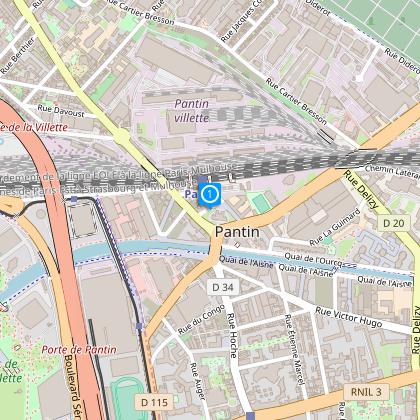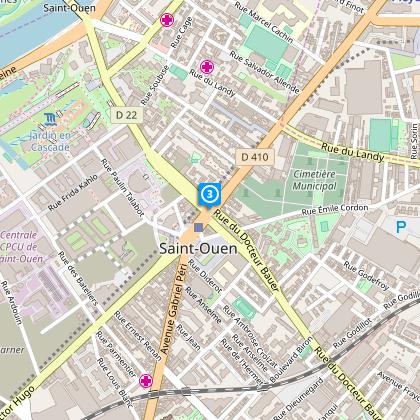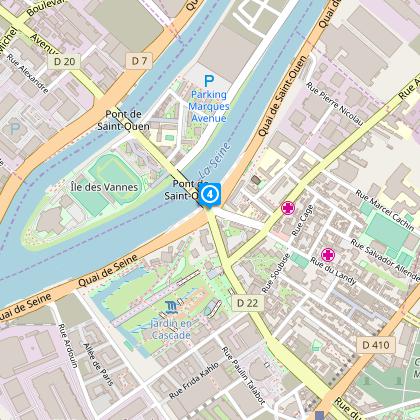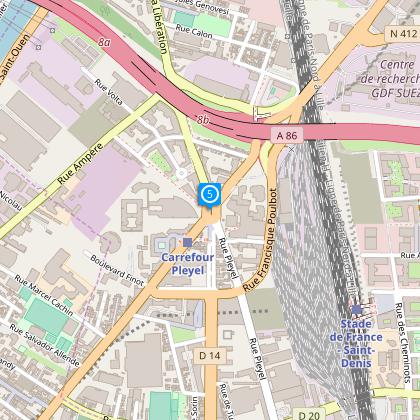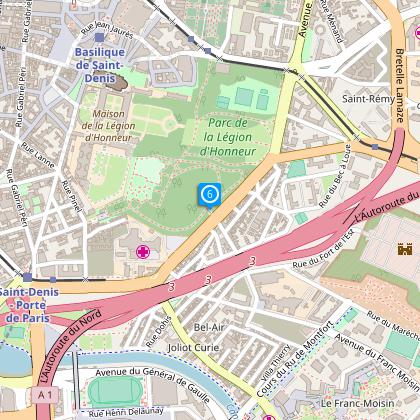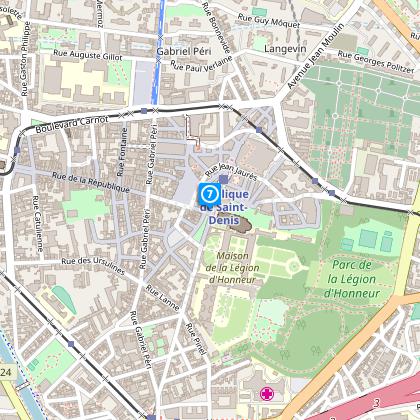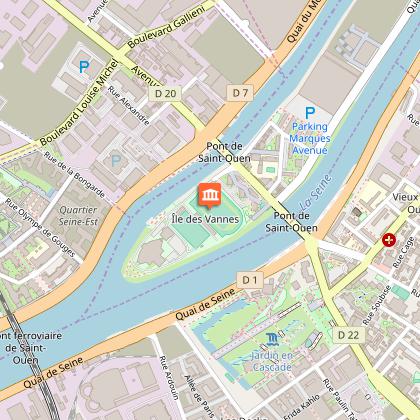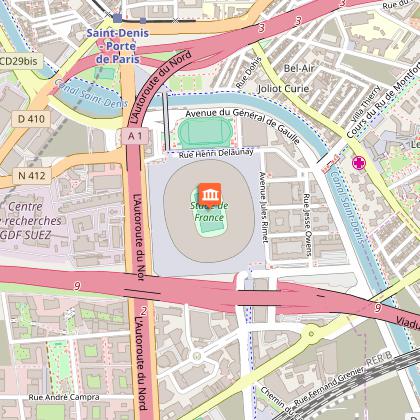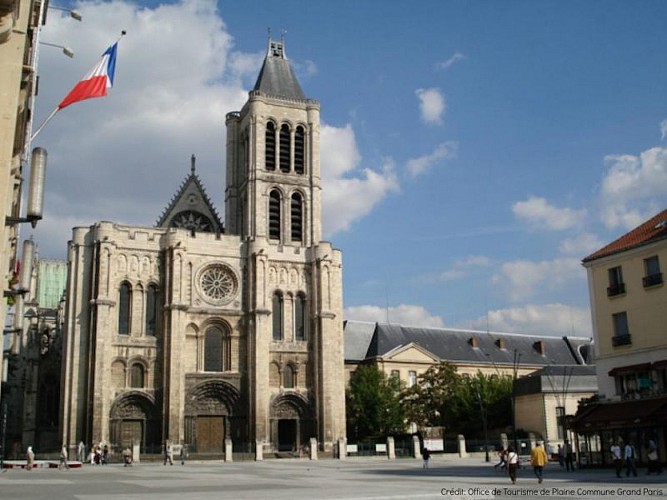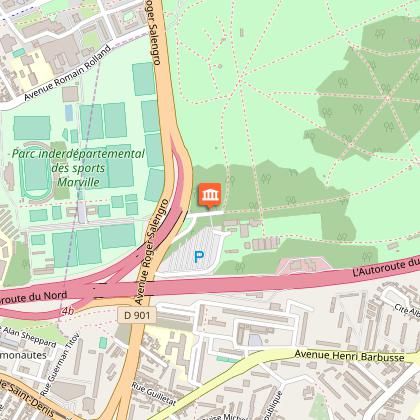Waarschuwing
Waarschuwingen
Type oefening
Wandel
Eenvoudig
6h
Presentatie
Beschrijving
Kaart
Stappen
Punten van interesse
Cirkwi's opdracht
Beoordelingen en recensies
Zie rondom
24 Km voor 2024 Editie 2018
De Cirkwi brief
Ervaar Parijs 2024 Olympische locaties te voet: een culturele reis
Met deze zorgvuldig samengestelde wandeling van FFRandonnée Seine-Saint-Denis ontdekt u niet alleen de toekomstige locaties van de Olympische Spelen van Parijs 2024, maar brengt het ook een levendige mozaïek van culturele en architectonische wonderen langs de Seine-Saint-Denis bij elkaar. Over verschillende afstanden nodigt het enthousiastelingen uit om door de historische straten te wandelen, langs het Canal Saint-Denis en de opmerkelijke stedelijke omgeving van Street Art Avenue te verkennen. Deze reis gaat verder dan zomaar een wandeling; het is een meeslepend verhaal dat verteld wordt door de straten van Saint-Denis, het iconische Ile de Vannes en de uitgestrekte schoonheid van het Parc départemental Georges-Valbon, terwijl het een verbinding maakt met de sportieve geest van de toekomstige Olympische Spelen.
Korte technische beoordeling voor enthousiastelingen
Met een totale afstand van 24.049 km, met een minimumhoogte van 24 meter en een piekhoogte van 56 meter, presenteert het parcours een bescheiden uitdagend terrein met een totale positieve hoogtevariatie tussen 32 en 49 meter. Het traject is geschikt voor verschillende deelnemers en de flexibiliteit in afstand - met opties van 10 km, 15 km, 18 km en de volledige 24 km - is geschikt voor wandelaars van alle fitnessniveaus, terwijl het zorgen voor een uitgebreide ervaring van de locaties die cruciaal zullen zijn tijdens de Olympische Spelen van Parijs 2024.
Seizoensgebonden bezoektips en veiligheid
Ongeacht het seizoen, is het belangrijk om voorbereid te zijn voor een optimale ervaring op dit diverse parcours. In het voorjaar en de herfst is laagjeskleding cruciaal vanwege de wisselende weersomstandigheden. In de zomer heeft u zonnebrandcrème, hoeden en voldoende water nodig om gehydrateerd te blijven onder de zon. Winters, hoewel mild, vereisen warme kleding. Houd altijd een kaart en een opgeladen telefoon bij de hand voor noodgevallen. Bovendien is het belangrijk om op gemarkeerde paden te blijven voor veiligheid en om de natuurlijke en stedelijke omgevingen die u zult verkennen te behouden. Controleer lokale waarschuwingen voor eventuele tijdelijke beperkingen of evenementen die de toegankelijkheid kunnen beïnvloeden.
De pols van Seine-Saint-Denis: een historisch inzicht
Seine-Saint-Denis heeft een rijke geschiedenis en cultuur, die naadloos samensmelt met zijn eigentijdse betekenis als gastheer voor de aankomende Olympische Spelen van Parijs 2024. Van zijn oorsprong als een belangrijk industrieel knooppunt tot een smeltkroes van artistieke en architectonische innovatie, is dit departement altijd voorop geweest in vooruitgang. Het iconische Canal Saint-Denis en het architectonische wonder van het sportcomplex Ile de Vannes getuigen van de nalatenschap van het gebied en de voortdurende evolutie naar een levendige gemeenschap, in overeenstemming met de energieke geest waar de Olympische Spelen voor staan.
Overzicht van het weer en beste bezoektijden
Seine-Saint-Denis geniet van een gematigd klimaat, met milde winters en warme zomers. De neerslag is gelijkmatig verdeeld over het hele jaar, waardoor elk seizoen geschikt is voor een bezoek. Voor de meest comfortabele wandelervaring zijn late lente tot vroege zomer (mei-juni) en begin herfst (september-oktober) ideaal. Deze periodes bieden aangename temperaturen en minder regenbuien, wat het genot van buitenactiviteiten en de verkenning van de Olympische locaties en het rijke culturele erfgoed van de regio bevordert.
Met deze zorgvuldig samengestelde wandeling van FFRandonnée Seine-Saint-Denis ontdekt u niet alleen de toekomstige locaties van de Olympische Spelen van Parijs 2024, maar brengt het ook een levendige mozaïek van culturele en architectonische wonderen langs de Seine-Saint-Denis bij elkaar. Over verschillende afstanden nodigt het enthousiastelingen uit om door de historische straten te wandelen, langs het Canal Saint-Denis en de opmerkelijke stedelijke omgeving van Street Art Avenue te verkennen. Deze reis gaat verder dan zomaar een wandeling; het is een meeslepend verhaal dat verteld wordt door de straten van Saint-Denis, het iconische Ile de Vannes en de uitgestrekte schoonheid van het Parc départemental Georges-Valbon, terwijl het een verbinding maakt met de sportieve geest van de toekomstige Olympische Spelen.
Korte technische beoordeling voor enthousiastelingen
Met een totale afstand van 24.049 km, met een minimumhoogte van 24 meter en een piekhoogte van 56 meter, presenteert het parcours een bescheiden uitdagend terrein met een totale positieve hoogtevariatie tussen 32 en 49 meter. Het traject is geschikt voor verschillende deelnemers en de flexibiliteit in afstand - met opties van 10 km, 15 km, 18 km en de volledige 24 km - is geschikt voor wandelaars van alle fitnessniveaus, terwijl het zorgen voor een uitgebreide ervaring van de locaties die cruciaal zullen zijn tijdens de Olympische Spelen van Parijs 2024.
Seizoensgebonden bezoektips en veiligheid
Ongeacht het seizoen, is het belangrijk om voorbereid te zijn voor een optimale ervaring op dit diverse parcours. In het voorjaar en de herfst is laagjeskleding cruciaal vanwege de wisselende weersomstandigheden. In de zomer heeft u zonnebrandcrème, hoeden en voldoende water nodig om gehydrateerd te blijven onder de zon. Winters, hoewel mild, vereisen warme kleding. Houd altijd een kaart en een opgeladen telefoon bij de hand voor noodgevallen. Bovendien is het belangrijk om op gemarkeerde paden te blijven voor veiligheid en om de natuurlijke en stedelijke omgevingen die u zult verkennen te behouden. Controleer lokale waarschuwingen voor eventuele tijdelijke beperkingen of evenementen die de toegankelijkheid kunnen beïnvloeden.
De pols van Seine-Saint-Denis: een historisch inzicht
Seine-Saint-Denis heeft een rijke geschiedenis en cultuur, die naadloos samensmelt met zijn eigentijdse betekenis als gastheer voor de aankomende Olympische Spelen van Parijs 2024. Van zijn oorsprong als een belangrijk industrieel knooppunt tot een smeltkroes van artistieke en architectonische innovatie, is dit departement altijd voorop geweest in vooruitgang. Het iconische Canal Saint-Denis en het architectonische wonder van het sportcomplex Ile de Vannes getuigen van de nalatenschap van het gebied en de voortdurende evolutie naar een levendige gemeenschap, in overeenstemming met de energieke geest waar de Olympische Spelen voor staan.
Overzicht van het weer en beste bezoektijden
Seine-Saint-Denis geniet van een gematigd klimaat, met milde winters en warme zomers. De neerslag is gelijkmatig verdeeld over het hele jaar, waardoor elk seizoen geschikt is voor een bezoek. Voor de meest comfortabele wandelervaring zijn late lente tot vroege zomer (mei-juni) en begin herfst (september-oktober) ideaal. Deze periodes bieden aangename temperaturen en minder regenbuien, wat het genot van buitenactiviteiten en de verkenning van de Olympische locaties en het rijke culturele erfgoed van de regio bevordert.
Automatisch gegenereerd.
IGN kaarten
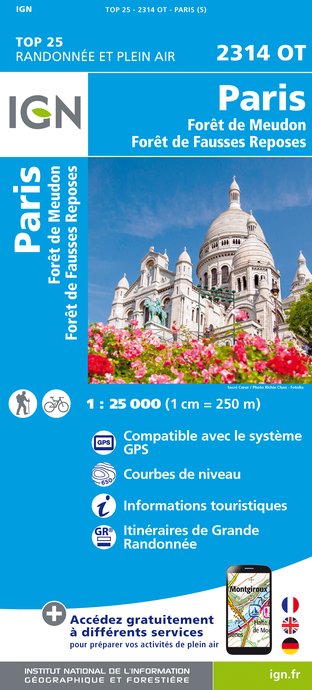
2314OT - PARIS FORÊT DE MEUDON FORÊT DE FAUSSES REPOSES
Uitgever : IGN
Verzameling : TOP 25 ET SÉRIE BLEUE
Ladder : 1:25 000
13.90€
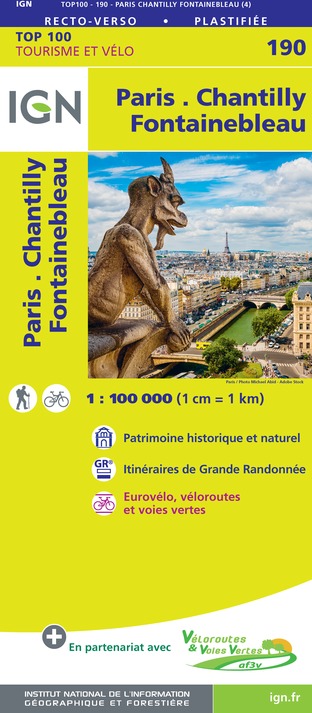
190 PARIS CHANTILLY FONTAINEBLEAU
Uitgever : IGN
Verzameling : TOP 100
Ladder : 1:100 000
8.40€
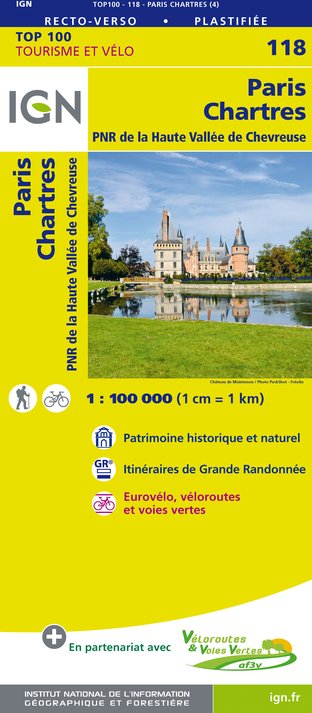
118 PARIS CHARTRES PNR DE LA HAUTE VALLÉE DE CHEVREUSE
Uitgever : IGN
Verzameling : TOP 100
Ladder : 1:100 000
8.40€
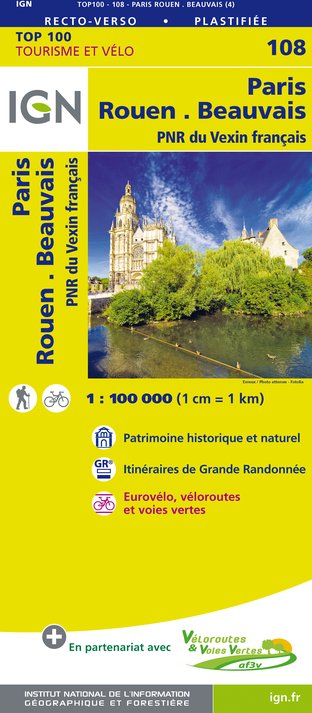
108 PARIS ROUEN BEAUVAIS PNR DU VEXIN FRANÇAIS
Uitgever : IGN
Verzameling : TOP 100
Ladder : 1:100 000
8.40€
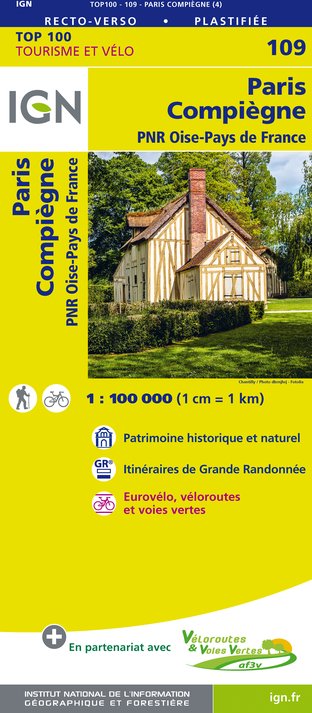
109 PARIS COMPIÈGNE PNR OISE-PAYS DE FRANCE
Uitgever : IGN
Verzameling : TOP 100
Ladder : 1:100 000
8.40€

D75-95 ÎLE-DE-FRANCE OUEST
Uitgever : IGN
Verzameling : CARTES DÉPARTEMENTALES IGN
Ladder : 1:150 000
5.90€

D77 SEINE-ET-MARNE
Uitgever : IGN
Verzameling : CARTES DÉPARTEMENTALES IGN
Ladder : 1:150 000
5.90€
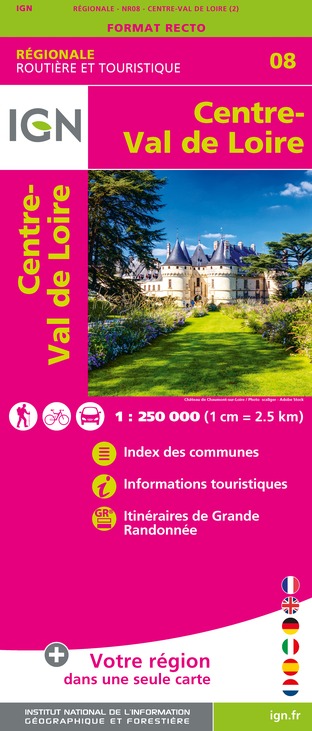
NR08 CENTRE-VAL DE LOIRE
Uitgever : IGN
Verzameling : CARTES RÉGIONALES IGN
Ladder : 1:250 000
6.80€

NR03 ÍLE DE FRANCE
Uitgever : IGN
Verzameling : CARTES RÉGIONALES IGN
Ladder : 1:250 000
6.80€

NR01 HAUTS-DE-FRANCE
Uitgever : IGN
Verzameling : CARTES RÉGIONALES IGN
Ladder : 1:250 000
6.80€
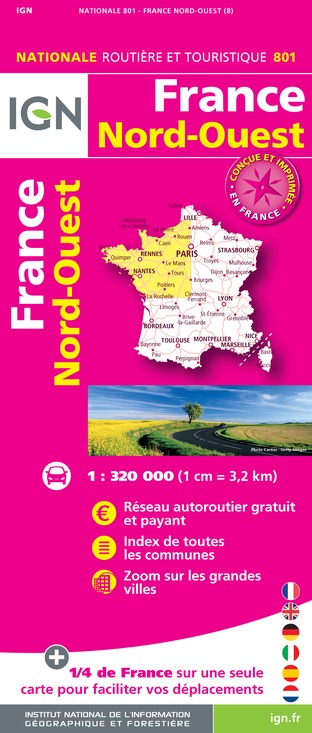
801 FRANCE NORD OUEST
Uitgever : IGN
Verzameling : CARTES NATIONALES IGN
Ladder : 1:320 000
6.10€

EUROPE
Uitgever : IGN
Verzameling : DÉCOUVERTE DES PAYS DU MONDE IGN
Ladder : 1:2 500 000
7.00€
Technische informatie
Wandel
Moeilijkheid
Eenvoudig
Duur
6h
(1d)
Afstand
24 km
Type oefening
Wandel
Eenvoudig
6h
Meer informatie tonen
Hoogteprofiel
Startpunt
2
Place du Président Salvador Allende
,
93500
Pantin
Lat : 48.89711Lng : 2.40083
Stappen
Punten van interesse
Gegevensauteur

voorgesteld door
CDRP 93
1Ter Place des martyrs de la Résistance et de la Déportation 93110 Rosny-sous-Bois France
Beoordelingen en recensies
Om te zien rondom
